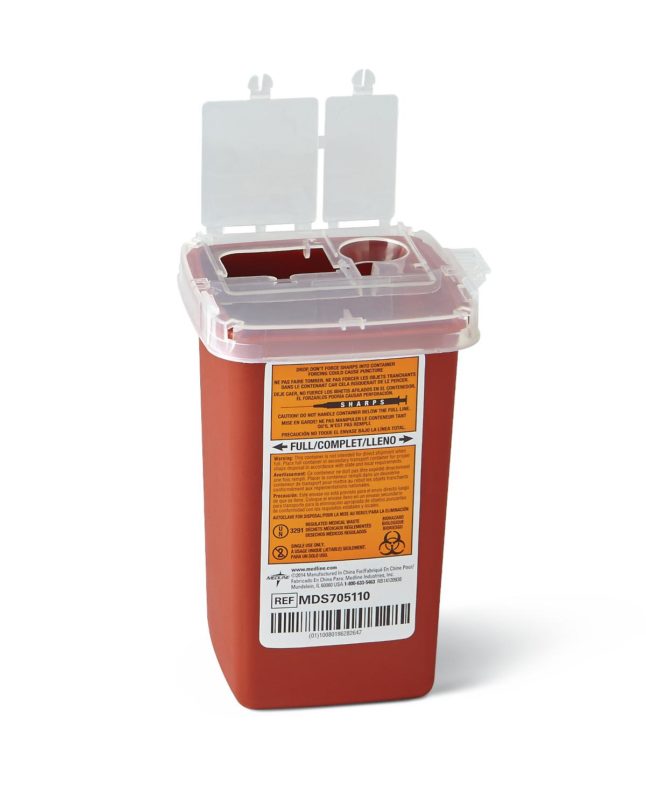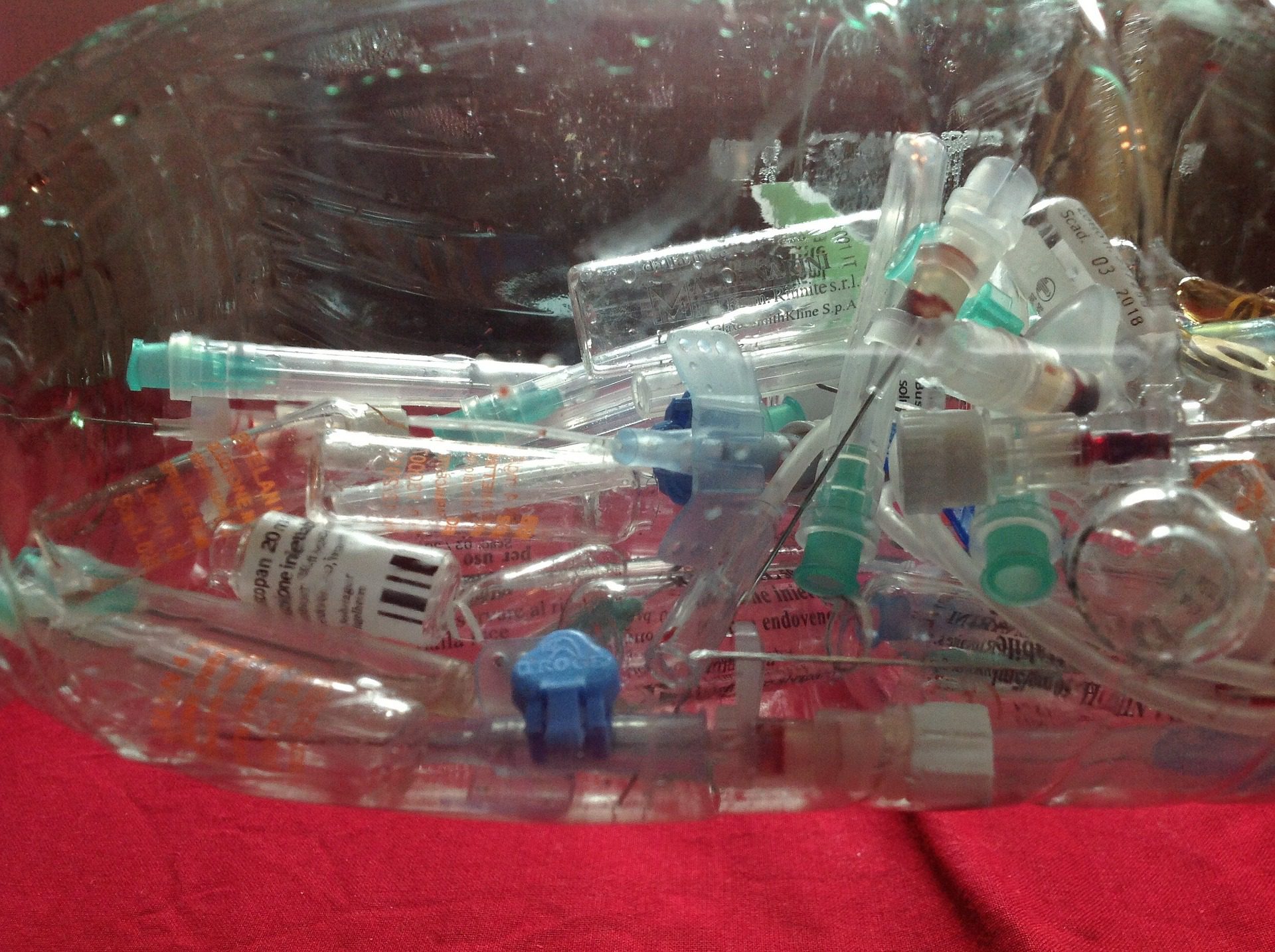Keep Ahead of Laws: Expert Recommendations on Medical Garbage Disposal
In a world where the healthcare sector is frequently progressing, it is imperative for clinical facilities to stay in advance of guidelines when it comes to the proper disposal of clinical waste. From recognizing the different categories of clinical waste to executing the right collection and partition approaches, this discussion will give beneficial insights and workable suggestions to assist centers remain in advance of policies in the ever-changing landscape of medical waste disposal.
Recognizing Clinical Waste Categories
Comprehending medical waste groups is necessary for appropriate disposal and management in medical care centers. Medical waste describes any type of waste produced by healthcare tasks that may posture a hazard to public health and wellness or the atmosphere. It is essential to classify medical waste precisely to ensure its risk-free handling, disposal, treatment, and transportation.
There are numerous categories of clinical waste that medical care facilities need to be knowledgeable about. The most common classifications consist of infectious waste, pathological waste, sharps waste, pharmaceutical waste, and chemical waste. Each classification has details standards and policies for its correct management and disposal.
Contagious waste consists of products polluted with blood or various other bodily liquids, such as handwear covers, gowns, and research laboratory cultures. Pathological waste refers to human cells, body organs, or body parts that call for unique handling and disposal. Sharps waste includes made use of needles, syringes, and other sharp things that can create injury and transmit infections. Pharmaceutical waste makes up expired, extra, or polluted medicines that require mindful handling and disposal. Lastly, chemical waste includes solvents, disinfectants, and other chemical substances used in healthcare facilities.
Staying Up-To-Date With Regulatory Modifications
Staying current with governing adjustments is vital for medical care facilities to guarantee conformity and correct monitoring of clinical waste disposal. medical waste removal near me. With policies frequently developing, it is crucial for healthcare centers to remain up-to-date to prevent penalties, fines, and possible damage to the environment and public wellness
To remain ahead of governing modifications, healthcare centers ought to establish a system for surveillance and monitoring updates. This can be done by signing up for regulatory e-newsletters, attending workshops and seminars, and actively getting involved in industry organizations. Additionally, centers must designate a team participant or team in charge of staying educated and disseminating details to pertinent stakeholders.
Routine interaction with regulative firms is likewise vital. Health care centers must establish partnerships with neighborhood, state, and federal firms to ensure they recognize any adjustments in guidelines that may affect their waste management methods. This can be done through normal conferences, involvement in public remark periods, and positive interaction with regulatory firms.
Moreover, health care facilities need to think about partnering with waste administration companies that specialize in medical garbage disposal (medical waste disposal services with WasteX). These companies are typically fluent in the current guidelines and can give guidance and support to guarantee compliance
Carrying Out Correct Collection and Partition Approaches
To effectively manage medical waste disposal, healthcare facilities must establish proper collection and segregation methods based on regulatory guidelines. Executing these techniques makes certain the secure handling and disposal of possibly unsafe products, protects the environment, and reduces the danger of injuries and infections to medical care employees and the public.
Correct collection and partition methods involve the use of designated containers and classifying systems. Medical care facilities ought to provide plainly classified containers for various kinds of medical waste, such as sharps, transmittable waste, pharmaceutical waste, and non-hazardous waste. These containers need to be color-coded and plainly marked to avoid complication and promote easy recognition.
Furthermore, healthcare centers must train their staff on the proper treatments for collecting and setting apart clinical waste. This includes enlightening them on the different kinds of waste, the suitable containers to use, and the relevance of complying with laws and standards. Regular training sessions and refresher course programs should be performed to guarantee that personnel remain up-to-date on ideal methods.
In addition, medical care centers must develop a system for routine collection and disposal of medical waste. This might involve partnering with qualified waste management firms that specialize in clinical waste disposal. These business will certainly guarantee that the accumulated waste is delivered and taken care of in compliance with regulative needs.
Choosing the Right Disposal Approaches

Incineration is among one of the most efficient and usual approaches for getting rid of particular types of medical waste, such as pathological waste and sharps. It includes the regulated burning of waste at high temperature levels, reducing it to ash. Incineration can release hazardous pollutants into the air and add to air contamination.

Chemical therapy entails the usage of chemicals to reduce the effects of the waste and sanitize. Microwave therapy makes use of microwave power to warmth and decontaminate the waste.
Making Sure Conformity Through Paperwork and Training
After meticulously thinking about the proper disposal methods for medical waste, healthcare facilities should make sure conformity with laws and decrease ecological influence by implementing effective documentation and training treatments. This action is vital in maintaining a risk-free and lasting environment for both healthcare employees and the basic public.

Health care employees that manage clinical waste must obtain ideal training on waste partition, taking care of, and disposal treatments. By giving thorough training, medical care centers can encourage their personnel to make educated decisions and reduce the danger of improper waste disposal.
Conclusion
To conclude, staying ahead of regulations in medical waste disposal is essential for healthcare centers. medical waste removal service. Comprehending the different groups of clinical waste, remaining updated with regulatory adjustments, applying appropriate collection and segregation methods, picking the ideal disposal techniques, and making sure compliance via documents and training are all necessary steps. By following these guidelines, medical care organizations can effectively take care of and get rid of of medical waste in a secure and liable way
From comprehending the different groups of medical waste to applying the appropriate collection and segregation approaches, this discussion will certainly offer valuable understandings and workable ideas to assist centers stay in advance of regulations in the ever-changing landscape of medical waste disposal. - medical waste disposal services with WasteX
The most usual categories include infectious waste, pathological waste, sharps waste, pharmaceutical waste, and chemical waste. Health care centers need to give clearly labeled containers for different types of medical waste, such as sharps, infectious waste, pharmaceutical waste, and non-hazardous waste. Health care Visit Your URL facilities need to develop a thorough system to record and track all aspects of medical waste disposal, why not check here including types of waste created, amounts, and disposal techniques used. Medical care employees that handle clinical waste needs to obtain appropriate training on waste partition, handling, and disposal procedures.